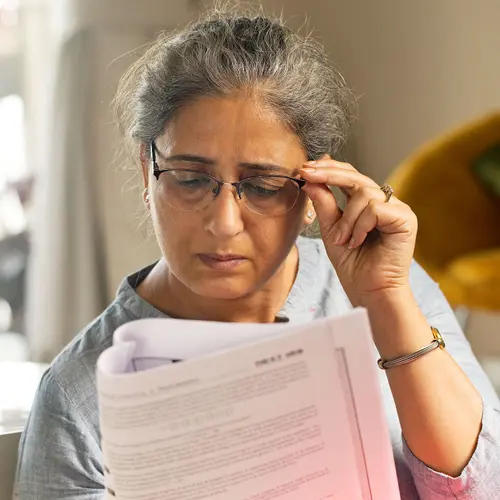Age-related macular degeneration (AMD) damages the macula, the part of your eye that helps you see clearly straight ahead. A few treatments help to slow wet age-related macular degeneration (AMD) and protect vision, but they don't work for everyone. And there even fewer treatments available to slow the progression of the dry form of the disease.
Researchers are always testing new treatments in clinical trials. They want to learn how well new drugs, surgical procedures, or medical devices work compared to current treatments. These studies also explore new ways to prevent and diagnose AMD.
Whether you've read about a study or your doctor suggested that you join one, you might wonder whether a clinical trial is right for you.
Why Should You Join a Clinical Trial?
Everyone has their own reasons to join a study. You might sign up because you want to try a new treatment that isn't available to the public. You may want access to the doctors and other medical staff who oversee these studies. Or you might want to learn more about AMD and how to manage it.
Some people join a clinical trial for more selfless reasons. They want to move the science forward and help researchers find better treatments. When you participate in a clinical trial today, you help future generations of people with AMD.
What Kinds of Clinical Trials Are There for People With AMD?
Thousands of AMD clinical trials around the world are studying:
- New medications
- Stem cell transplants
- Supplements like omega-3 fatty acids and lutein
- Diet and other lifestyle changes
- Light therapy
- Surgical procedures
- Vision aids for people who've lost sight
If you'd like to join a trial, talk to the doctor who treats your AMD. Or check the list of open studies at Clinicaltrials.gov.
How Do Clinical Trials Work?
Every trial has certain goals and rules about who is eligible to take part. Most studies are monitored by a group of experts called an Institutional Review Board (IRB) to make sure that everyone who participates is safe.
Clinical trials are divided into stages called phases.
Phase Itrials are the smallest studies. Researchers test the treatment in 20 to 80 people to make sure it's safe.
Phase IItrials give the treatment to 100 to 300 people to see if it works and to check its safety.
Phase III trials involve a few thousand people. These studies help to confirm that the treatment works, monitor for side effects, and see how well it compares to current therapies.
Phase IV trials happen after the FDA has approved the drug, to gather more information about the treatment's safety and effectiveness.
Some clinical trials use a placebo, an inactive substance that looks like the real medication. Even if you do get a placebo, you may have the chance to cross over and get the experimental treatment later in the study.
What Can I Expect if I Join a Clinical Trial?
The process starts with screening. Studies have certain criteria that they need participants to meet. Whether you qualify could depend on:
- Your age
- Your diagnosis
- Your AMD stage
- What other health conditions you have
- What treatments you've tried
- How you responded to those treatments
The researchers will ask lots of questions about your health and vision to decide whether you're a good fit. If you qualify, members of the research team will explain the benefits and risks of the study to you. Then you can decide whether you want to take part. This process is called informed consent. Even after you sign the informed consent form, you have the right to drop out of the trial for any reason.
Your first study visit is called the "baseline." You'll have some tests. Then the researchers will assign you to a treatment or control (non-treatment) group. You may not know which group you're in until after the study ends. The research team will let you know how often you'll need to visit for follow-ups and tests.
A study can last for several months. At the end, the researchers will analyze the results and may submit them to medical journals to publish. If you would like to see the results, ask the study coordinator if they can send you a copy.
What Are the Risks of Joining?
The risks vary from one study to another. One risk is that you might get a placebo instead of the active treatment.
If you do get the treatment, it might cause side effects. Researchers test the safety and effectiveness of medications in animals before giving them to humans. Most side effects in studies are minor, but rarely people do have more serious reactions. The informed consent document should explain all the possible risks of the trial.
What Types of Questions Should You Ask?
Before you take part in a study, make sure you understand what the research is trying to learn and how it might help or hurt you. Here are a few questions to ask the study team:
- What is the purpose of the study?
- How long will it last?
- What are the possible benefits to me?
- What are the possible risks?
- How will you protect my safety and privacy?
- What tests will I need?
- How many times do I have to visit the center?
- Are there any costs? How much will I need to pay?
Also ask who to contact if you have any problems during the study. Once you decide to join, let your eye doctor know too, because they may want to monitor you throughout the trial.

